How to plan kitchen lighting - the complete expert guide
Everything you need to know to plan your lighting to perfection

Lighting can make or break any room - and perhaps none more so than kitchens. Discovering how to plan kitchen lighting will make this aspect of kitchen design a breeze.
Whatever kind of kitchen lighting ideas you're considering, there are a few universal guidelines to bear in mind. Plus, they can all be adapted to work in any style of kitchen, from ultra-modern to cosy country.
'A carefully planned lighting scheme will transform a kitchen’s mood, zones and atmosphere depending on the function in the space and the time of day,' points out Hugh Miller, Co-Founder, H. Miller Bros.
One of the first things you'll need to consider when planning your new kitchen is the lighting, as electrics and fittings have to be installed at the start of the project, before plastering, decorating and the fitting. It's an integral part of any scheme and this is your one chance to get it right.
‘Plan the lighting when you're thinking about the plumbing of your kitchen ideas,' advises Sally Storey, design director at John Cullen Lighting. ‘As a rule of thumb, allow as much budget for your lighting as you would the flooring. Your choices will depend on the size of the space and whether your room has a high or low ceiling.'
How to plan kitchen lighting
The key to creating a successful lighting scheme lies in layering the effects, so you should try to zone the lighting according to its use - working (task), dining and mood (ambient) and creating the wow factor (feature). It's important to concentrate on all three and consider dimmable solutions for even more flexibility.
'This can include overhead under cabinet lighting, wall lighting, ceiling lighting, and task lights that will focus on specific areas of the kitchen and can highlight areas of architectural interest,' says Graeme Smith, Head of Retail and Commercial design, Life Kitchens.
Sign up to our newsletter for style inspiration, real homes, project and garden advice and shopping know-how
How do you start planning lighting in a kitchen?

As we've said, lighting is one the pieces in your kitchen puzzle which must be planned out sooner rather than later.
'Get the positioning of the units more or less firmed up before the first fix,' advises Karan Main, Director, The Main Company. 'Once this has been completed a loose lighting plan can be done taking things a few things into consideration. These include not standing in your own shadow at the sink and allowing provision for lighting the internal cupboard areas.'
'Choosing the right lighting is an important consideration when creating an interior scheme,' agrees Victoria Rothschild, founder, Rothschild & Bickers. 'Every room has its own unique set of considerations but in a kitchen, lighting is a really important element of its design, and it should be considered early in the design phase. All too often the lighting in a kitchen is an afterthought.'
'The kitchen is a space used for many different roles,' continues Victoria. 'We do more than just cook and eat in our kitchens, it is where we gather, socialise, do homework and other family activities which means this room requires a range of lighting options at different times of day. Lighting needs to be functional but also have the capacity to set the mood as an entertaining space.'
'There are three basic types of lighting which should be considered in any interior, not just in a kitchen. Working out how and where to use these will help you create a well-considered lighting scheme and a kitchen balanced with usable and atmospheric light.'
What are the main types of lighting and how do they apply in a kitchen?
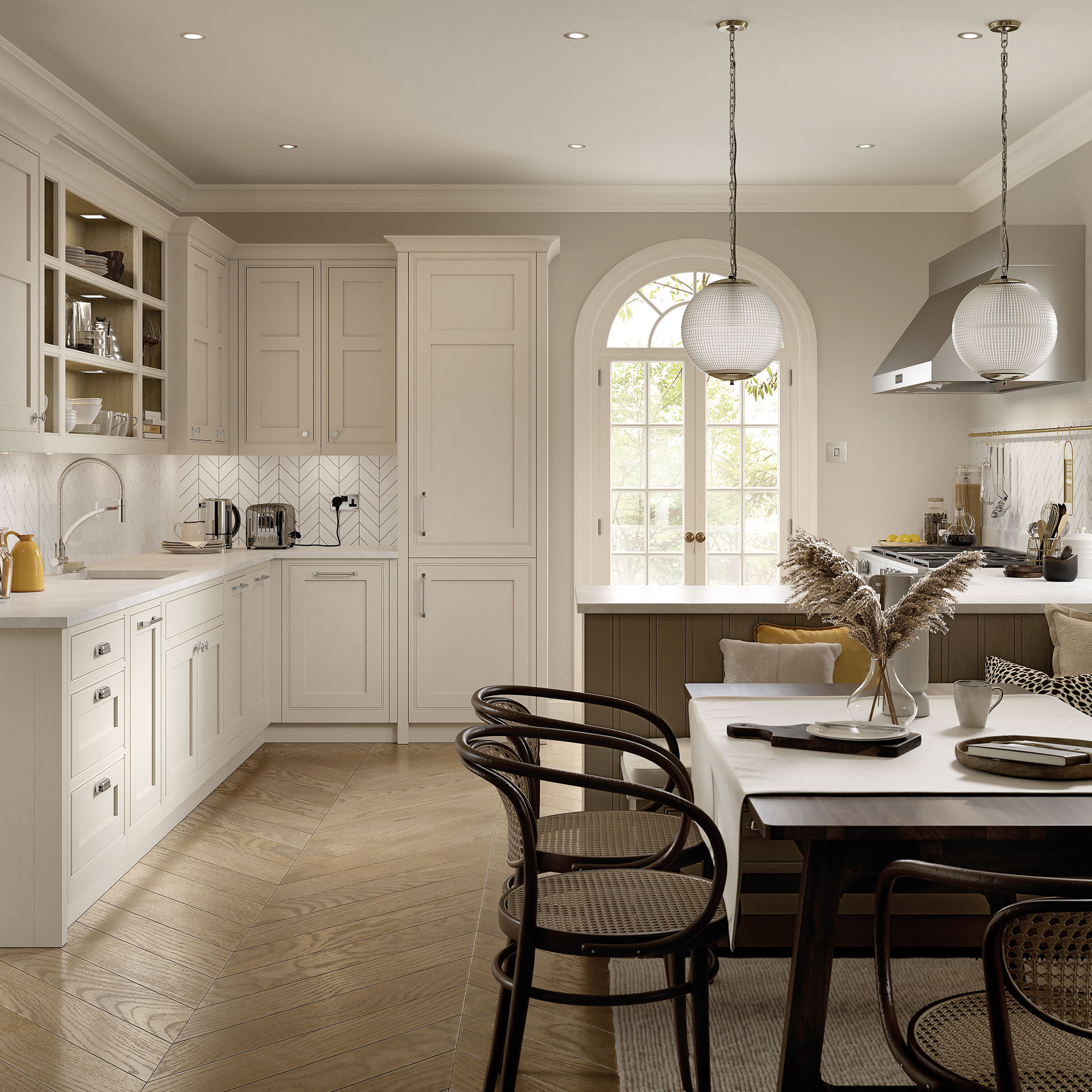
With how to plan kitchen lighting - and indeed that for any room - there are three main forms of lighting which should be taken into account. These are task, ambient and accent.
'Task lighting is the most beneficial form of lighting for any kitchen scheme,' believes David Amos, Founder, Amos Lighting + Home. 'This is because it serves the purpose of illuminating a space that you will be using.
'‘Task lighting is ideally suited to the areas where you need to see clearly,' says Tom Howley, Design Director, Tom Howley Kitchens. 'Such as when you’re preparing food or need to read recipes or cooking instructions.'
Ambient, or mood lighting, is the most general lighting scheme. This is used to provide an overall illumination in a space. 'Spotlights are a popular choice for kitchens, allowing for full room illumination without the clutter of lamps and wires,' notes Morten Warren, Founder, Zuma.
Finally we have accent, or decorative lighting, used to add visual interest. These can include striking pendants, island strip lights and back-lit worktop designs.
The key to a successful lighting scheme involves layering all these three together. 'An open plan kitchen usually requires multifunctional uses, from dining, entertaining, relaxing to homework, so these tasks should be reflected in the lighting plan,' points out Natalie Mann, New Product Development Executive, Iconic Lights. 'Layering the lighting will allow you to set the tone according to the mood and time of day.'
In line with this, try and make your lighting multi-functional. Dimmer switches for spotlights will help them work whatever the tone or time of day.
Where should lights be placed in a kitchen?
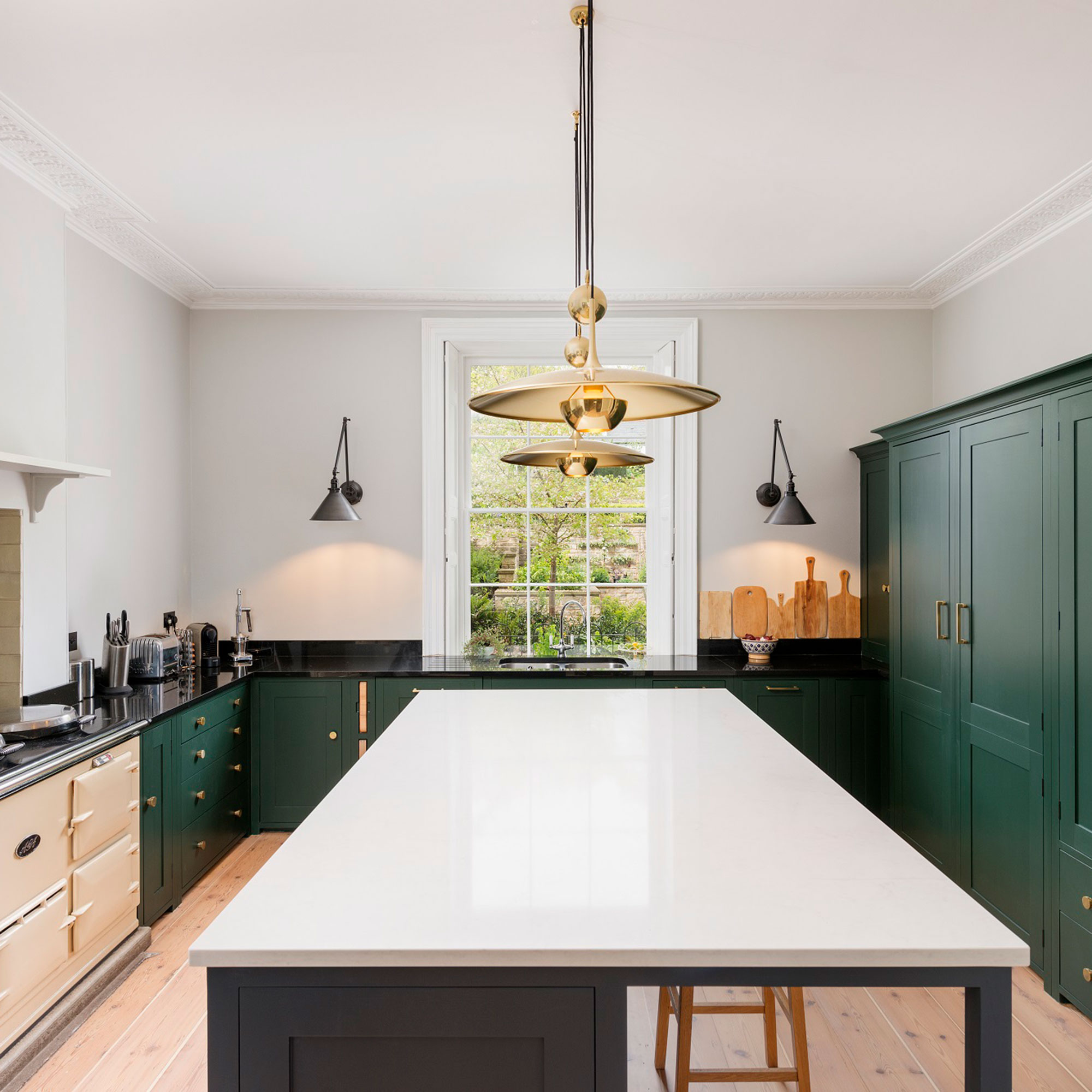
Possibly the most important question of how to plan kitchen lighting is simply working out where they should be placed. After all, you need to be aware of what not to do when designing a kitchen.
'When deciding where to place your lighting, the architecture and layout of your kitchen is the first thing to consider and if there is natural light and which direction it comes from,' advises Victoria from Rothschild & Bickers. 'Also take in to account the ceiling height and the proportions of the room too. Then work out where you need focused light directed. Once you have this foundation lighting, consider the decorative aspects. Do you want a dramatic chandelier or trio of pendant lights around the island or over the dining area.'
‘When it comes to introducing lighting into a kitchen, it's all about planning and thinking about where the lights will sit best,' agrees David from Amos Lighting. 'Incorporating task lighting such as pendants works particularly well above countertops to highlight a specific area. Alternatively wall lighting ideas are the perfect accompaniment to any compact scheme. You can opt for smaller wall-mounted options that will beautifully direct a warming light on shelving and worktops.'
Incorporate lighting into your kitchen storage ideas, too. 'Consider the ‘warm glow’ areas where glazed cupboard lights can be left on to shine through glasses stacked on glass shelves to create an atmosphere while dining in the kitchen,' suggests Karan from The Main Company. 'Plinth lighting is also popular, using tiny, subtle disks of light emanating across the floor. Also carefully consider the lighting over kitchen islands, as this often becomes the main preparation space and good lighting is essential.'
'Under cabinet lighting good to boost light levels where it’s needed, must be concealed, no dots visible,' recommends Piero De Marchis, Director, Detail Lighting. 'Ideally dimmable as these have second function as calming night-time lighting, if there is no switch then a sensor with variable time setting may be a compromise.'
How do you work out how many lights you need?
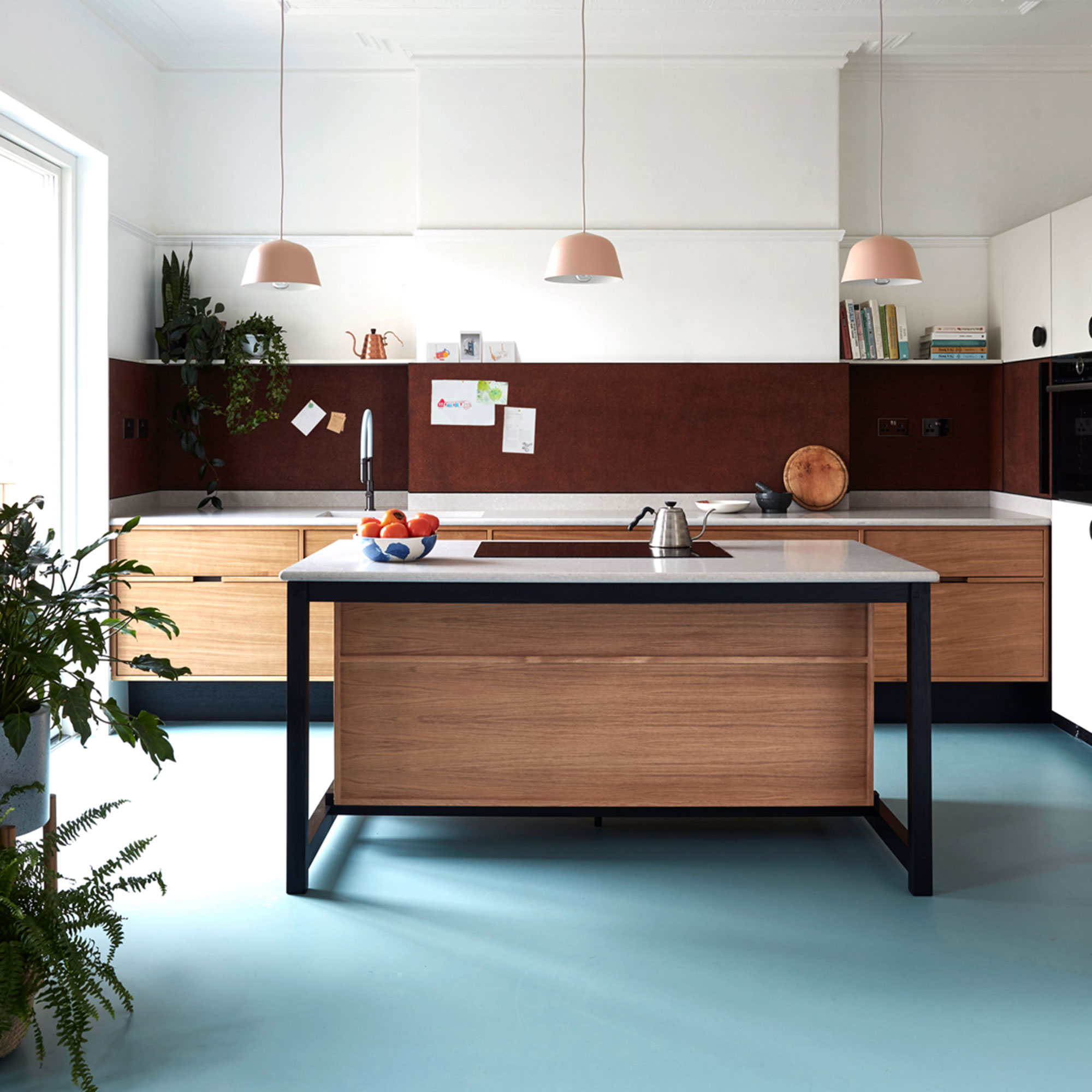
How long is a piece of string? The number of lights needed in your kitchen scheme varies on a number of things, so no answer fits across the board.
'It depends on the structure and layout of the kitchen as well as the amount of natural light within the space,' agrees Hugh from H. Miller Bros.
How long should pendant lights be?
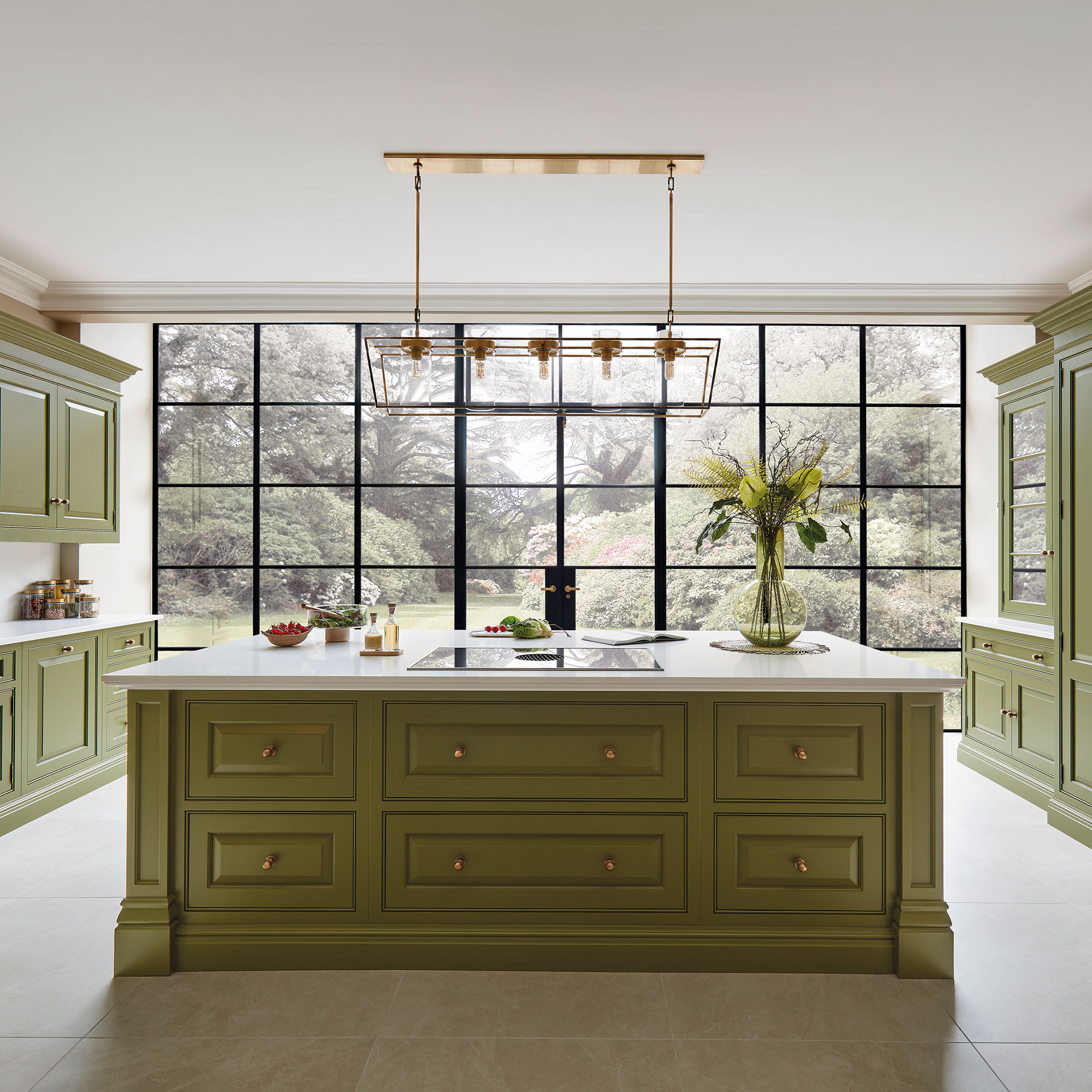
Pendant lighting is extremely popular in kitchens, especially for kitchen island lighting ideas. And there are good reasons why.
'We always recommend having a beautiful pendant as the centrepiece in a kitchen,' says Ian Cameron, Creative Director, Cameron Design House. 'Helping to zone the kitchen, the soft glow emitted from the striking centrepiece distinguishes a different area in the kitchen. This clearly defines a space made for socialising and eating.'
As desirable as they are, you do want to be sure you've got the right length. After all, you want it to be a useful light source without getting in the way. 'Pendants should hang 12-20 inches below an 8-foot ceiling,' advises Tom Howley. 'For each additional foot of ceiling height, add 3 inches. For example, for a 9-foot ceiling, the pendant should hang 15-23 inches below. Sets of three work really well together and ensure that the full length of the island can be illuminated.'
‘You don’t want pendant lighting to hang too low,' explains Tom. 'You need to ensure adequate clearance above taps, or for clearance purposes if you use your island for dining. It’s also important if you use pendant lighting as task lighting to make sure it’s at a practical height so that you can use the space efficiently without banging into it.’ If you have a stunning view from a window or you enjoy social gatherings in your kitchen, make sure pendant lighting doesn’t hang so low that it blocks any views. You don’t want to spend your dinner party talking to an attractive lampshade!'
Finally, if you're using more than one pendant, ensure you space them thoughtfully. ‘Keep the pendants an equal distance apart from each other to promote a sense of symmetry,' says Tom. 'Also, keep each end pendant about 6 inches inside the edge of the island.’
How far apart should downlight be placed?
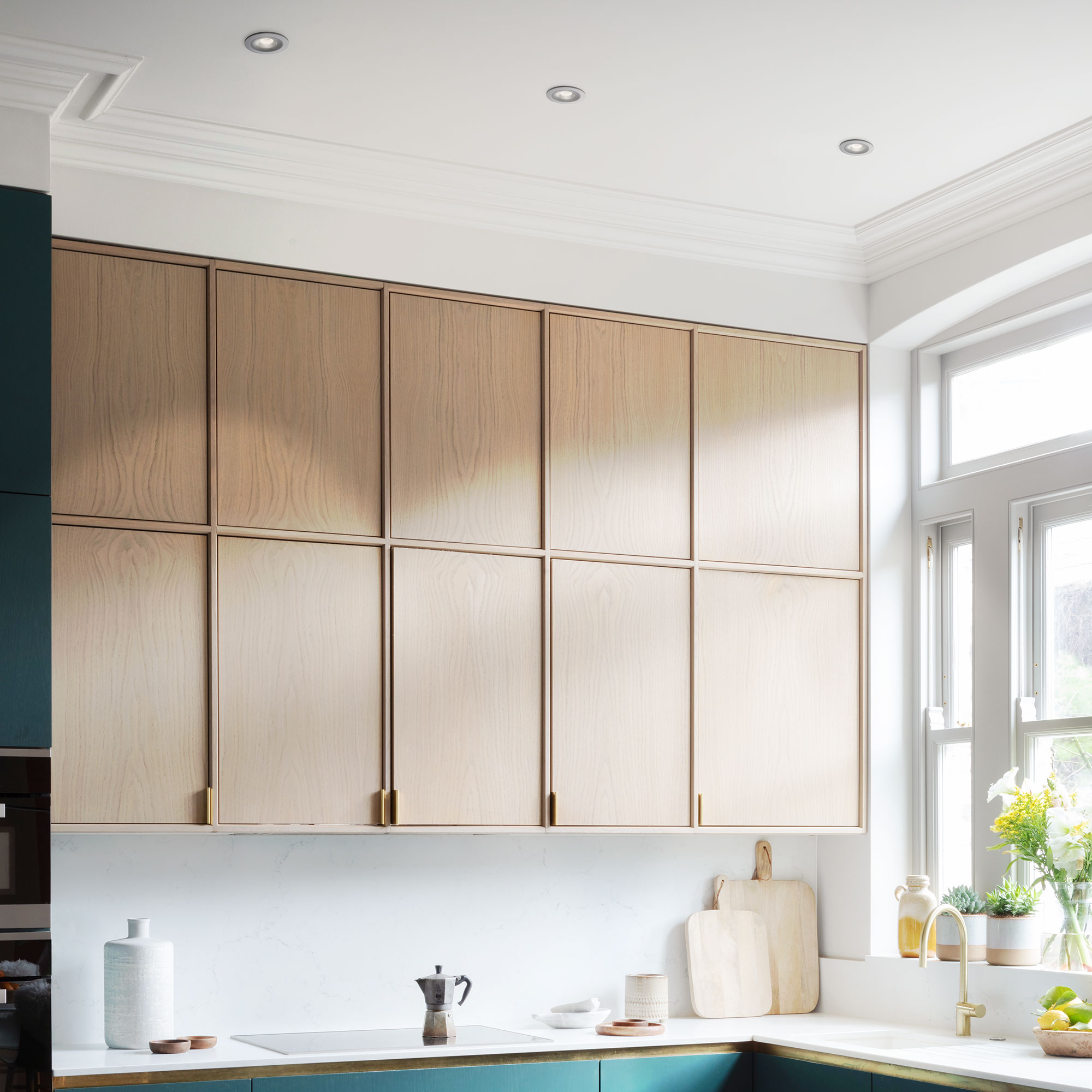
As with pendants, downlights and spotlights should have their positions carefully considered.
'Downlights are a great choice for small kitchen lighting ideas and those with very low ceiling lighting as they offer such versatility and variability as to where they can be placed,' says David from Amos Lighting. 'When fitting the lights, it’s always recommended to divide your ceiling height by 2 to allow you the space needed between each downlight.'
How bright should kitchen lights be?
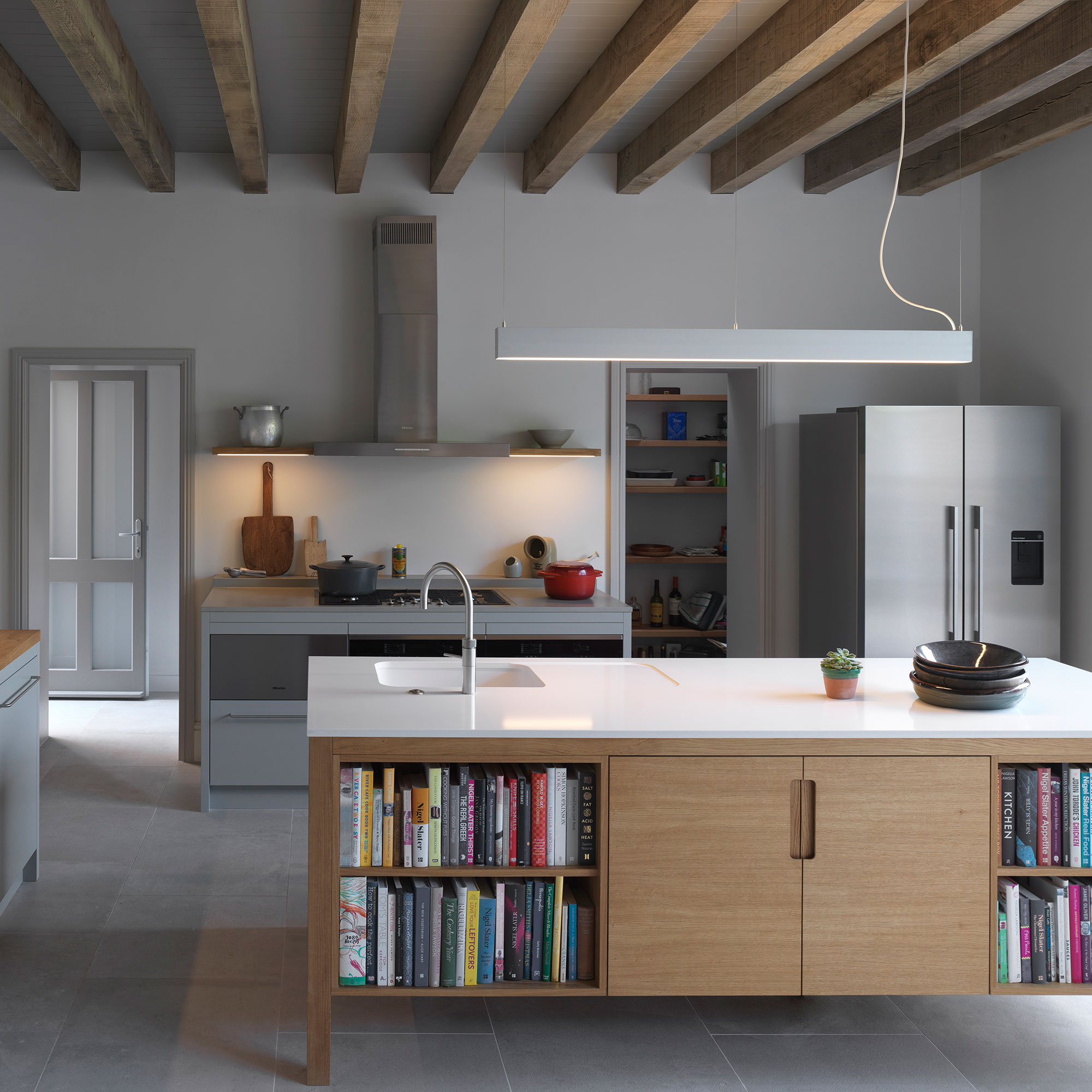
Ideally your kitchen lighting scheme should be flexible and allow you to include both brighter and dimmer options. A layered lighting scheme should allow you to have as bright or moody a space as desired - and in all the right places.
'Demanding versatility, a kitchen often plays host to cooking space, entertaining hub, home office and living room,' points out Morten from Zuma. 'Your lighting should be able to change accordingly, rather than simply being on, off or occasionally dimmed.'
'LED lighting is a popular choice with clients at the moment,' notes Graeme from Life Kitchens. 'They not only provide ample illumination for busy task areas, but they also aesthetically enhance the space. They’re also an energy efficient option and are much more long-lasting than standard bulbs. LED lighting is versatile and subtle. It allows for a streamlined design through your kitchen and bringing worktops and cabinets to life.'
What IP rating do I need for a kitchen light?
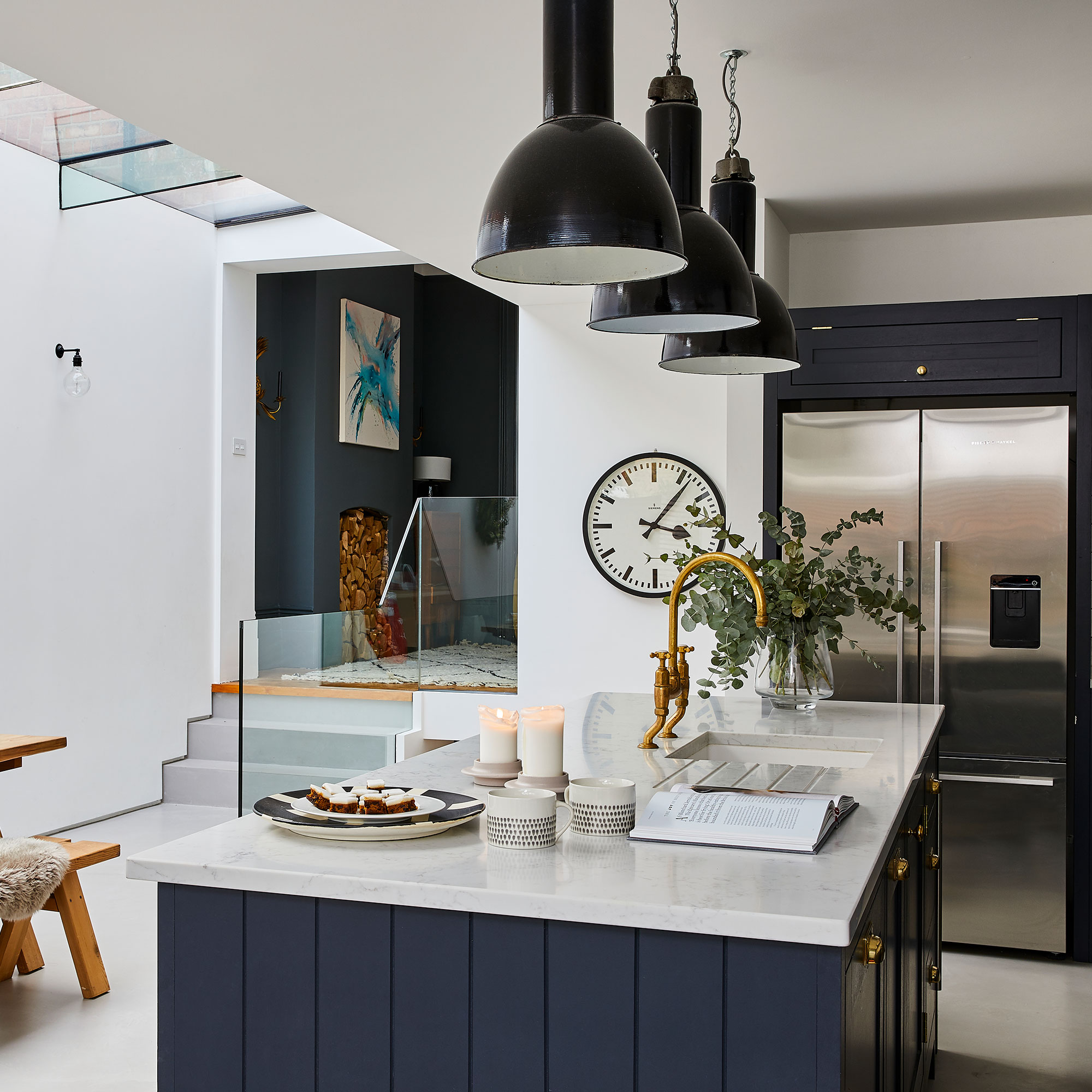
It's not just bathrooms where your light sources and water have the potential of meeting. 'IP rated lighting isn’t necessary,' explains Natalie from Iconic Lights. 'However it can be preferable to use IP20 rated lighting in the kitchen as they have increased protection from dust, dirt and condensation.
'We recommend that lighting they are at least 60cm away from a water source, so not hanging over the sink,' advises Victoria from Rothschild & Bickers. 'We usually recommend not to hang lights over the hob area as well. This is as they can get greasy and the heat can affect them.'
What is the current trend for kitchen lighting?
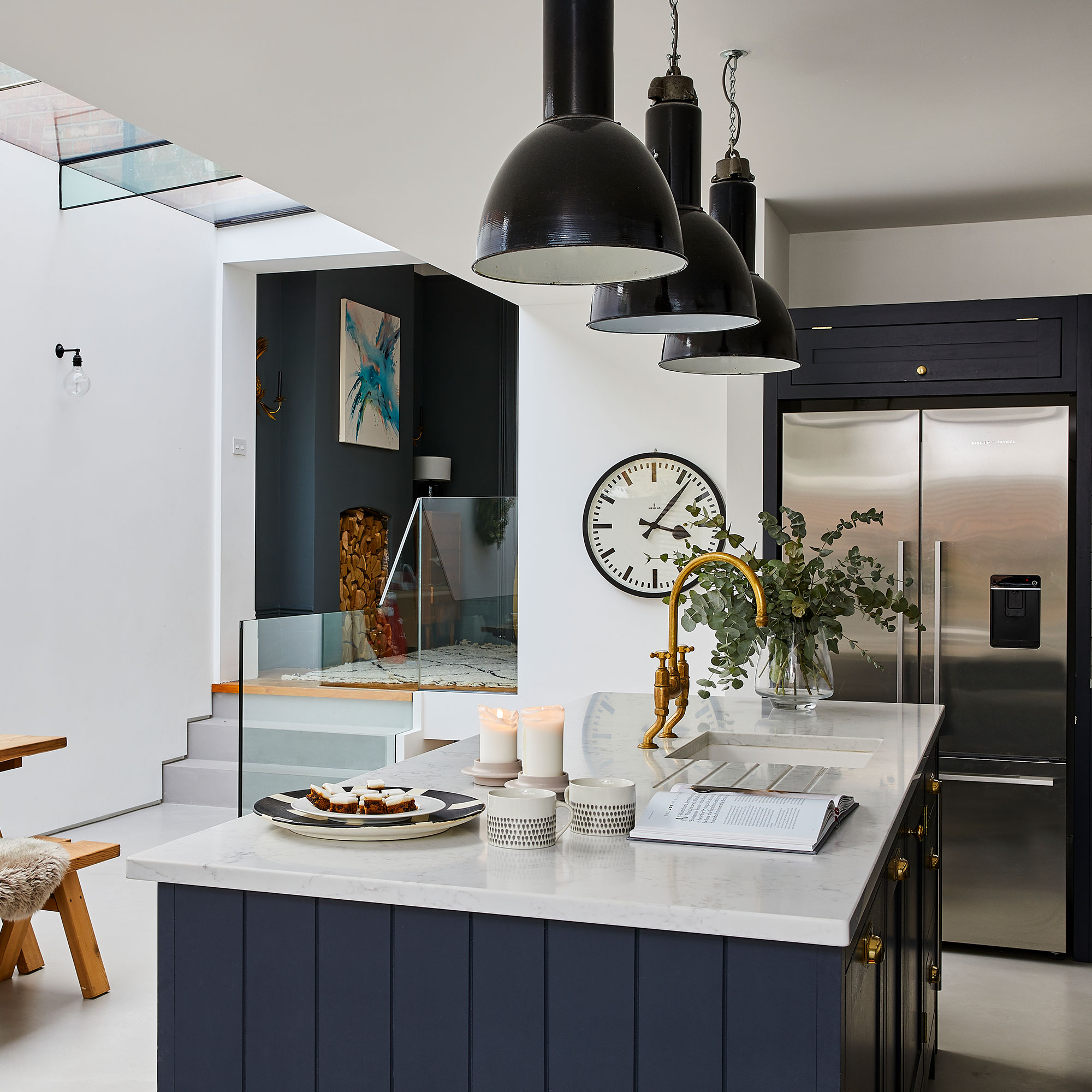
Just as with the rest of the home - trends come into play with kitchen lighting. At the moment, there are a few key kitchen trends for lighting. These include organic shapes and materials, as well as bolder colour choices.
'We have seen an increase in natural textures throughout every area of the home, including the kitchen,' notes Natalie from Iconic Lights. 'This trend is all about utilising organic materials, and embracing their unperfect textures and forms.'
'Soft, sculptural, organic shapes are very popular at the moment,' agrees Victoria from Rothschild & Bickers. 'This is alongside optic and diamond glass finishes which diffuse light to create an elegant and inviting look. We’ve also noticed a real shift towards our elegant hand-blown glass pendants over kitchen islands and dining tables. And we are seeing much more colour being used, with bolder jewel-like tones used to create visual statement.

Thea Babington-Stitt is the Assistant Editor for Ideal Home. Thea has been working across some of the UK’s leading interiors titles for nearly 10 years.
She started working on these magazines and websites after graduating from City University London with a Masters in Magazine Journalism. Before moving to Ideal Home, Thea was News and Features Editor at Homes & Gardens, LivingEtc and Country Homes & Interiors.